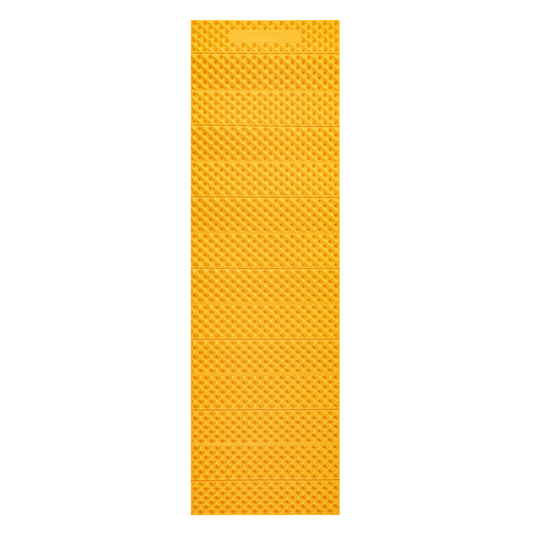
As you would with your urban home, caring for your tent is no different. Although tents were designed to withstand the elements, they’re not indestructible. With the proper care and maintenance, a good tent can serve you many years.
We’ll be showing you how to properly care for your tent during its lifecycle.
Tent Setup
Read the directions on your tent and practice pitching it at home before heading out to your trip. This will help you get familiar with the parts and how the tent should be properly packaged. Make sure you have all the critical components that you plan to take with you on your trip.
Find a smooth floor. After arriving to your campsite, search for a spot that is smooth and does not have much plants and rocks that could potentially puncture a hole through your floor. If there is no other place, do your best to clear off any debris without disrupting the camp site.

Use a footprint or ground cloth. A footprint or ground cloth will protect your tent floor from ground abrasion. Footprints should never be larger than your tent floor. This poses danger to puddles forming underneath the tent and possible leaks. Our tents come with a tailor-made footprint that is accustomed to the tent model. Some manufactures will include it or sell it separately. If you are not using a custom footprint, be sure to tuck any excess material that is sticking out of the tent.
Avoid the sun. Try to setup your tent in a shaded area. Prolonged exposure to ultraviolet (UV) rays can degrade the tent’s fabric.
Be gentle. Setting up your tent can be a chore, it’s normal to want to rough it out and get on with the fun activities. When unpacking the poles, slowly connect each section into place and avoid allowing the shock-cord to do the work. By manually connecting each section, you prevent the poles from chipping or cracking.
Backpacking tents are designed with very lightweight and sheer fabrics. With that said, be careful with the zippers. To properly zip your tent, hold the zipper track with one hand to ensure that the zipper is aligned. Do not try to force a stuck zipper that is stuck on the fabric, try to wiggle it out or slide the zipper back until it is on the track.
During use

Leave your shoes/boots outside. It’s best to leave your footwear outside of the tent or inside the vestibule to avoid bringing in any dirt and debris that can cause damage to the floor. If you cannot leave your shoes outside, wipe or dust off the soles and use a rug to place them on top of.
Store fragrant items in a safe container. Food, trash, and scented items such as toiletries attract critters, rodents, and bears. The best possible way to avoid unwanted creatures from breaking into your tent is to store it in a proper canister and place it in an open area 100 feet away from your tent.
Packing up

Shake off loose dirt and debris. Try to get rid of as much dirt and debris from the tent as you can. Freestanding or semi-freestanding tents make it easy to shake out dirt by simply leaving one of the doors unzipped and grabbing the poles to shake it out.
Making sure your tent is dry. Storing your tent dry is paramount for longevity. If you’re unable to have the tent completely dry, make sure to dry it within 24 hours at the next camp site or at home. Hang the tent on a close line or set it up in the yard to dry.

Roll it up instead of stuffing. Fold your tent body and rainfly into thirds or quarters, using your stuff sack as a guide to how the length of your roll should be. Place the folded rainfly over the folded tent body and roll them together tightly with the poles, forcing air out the tent. Following this procedure should help with putting the tent back into the stuff sack a breeze.
At Home
Check for moisture. Although you may have dried the tent at the camp site, there’s a chance moisture could have accumulated from packing or the change in humidity levels. Set up the tent or hang dry the tent in a shaded area when you get home. Damp fabrics will grow mildew and damage the water repellent coating.
Clean the tent if needed. If the tent was used during a long camping trip, chances are the tent may have accumulated a lot of dirt, sand, and other elements. Do not use a washing machine or dryer when cleaning the tent. Clean the tent with a non-scented, non-detergent soap and cold water. Use a non-abrasive sponge to scrub and hang dry.
Check for damages. After your tent has been cleaned and dried, inspect the tent for any holes, damage to the waterproof coating, or seam damage. Most damages can be repaired with patches, waterproof solution, or seam sealer; however, depending on the damage, it may be time to replace the parts or tent entirely. We offer replacement parts for our tents on our if needed.
Do not store it in the stuff sack. If you plan to store the tent away for a long period, avoid repackaging it in the stuff sack. Forced folds and creases put stress and damage to the coating. Store the tent in a more breathable fabric like a laundry bag or folded neatly in an open space.



